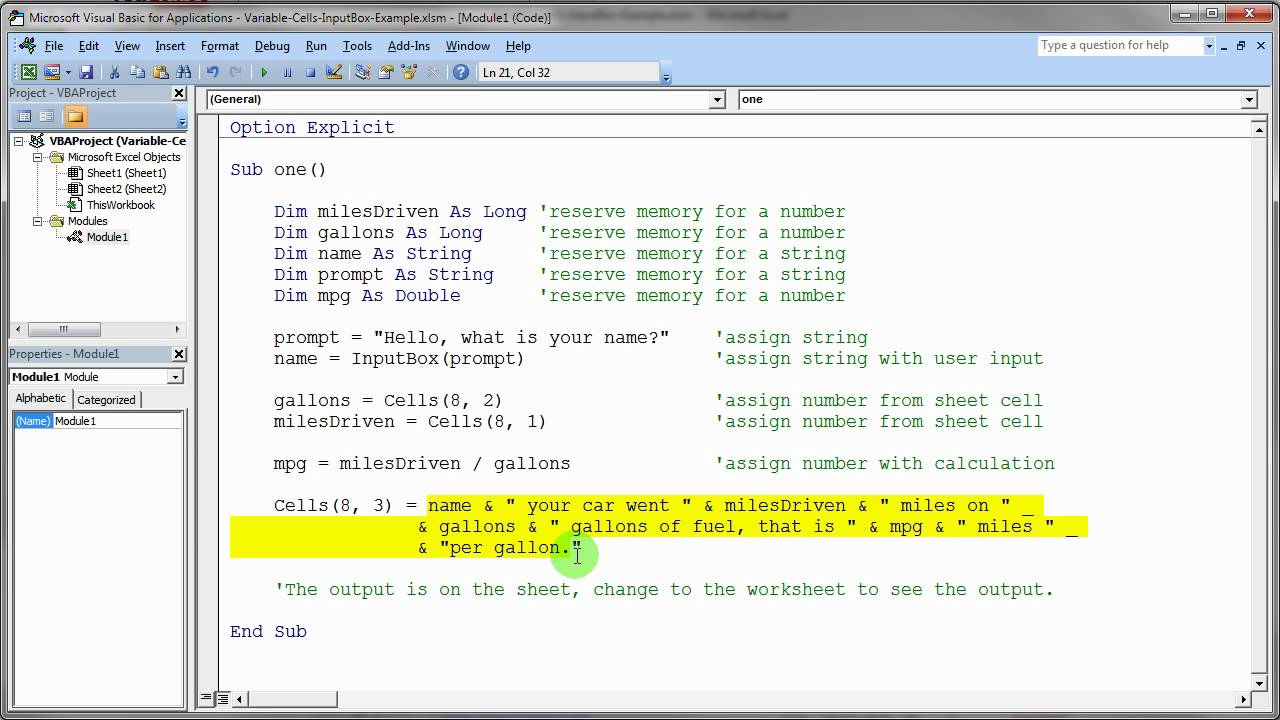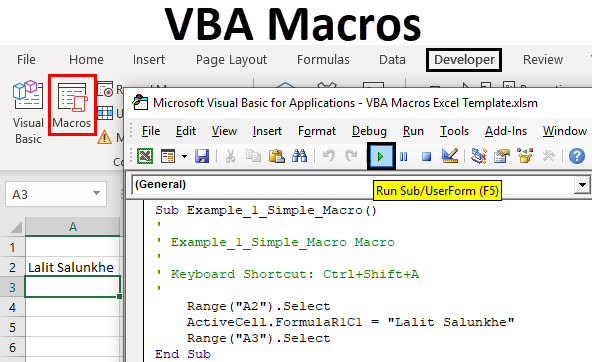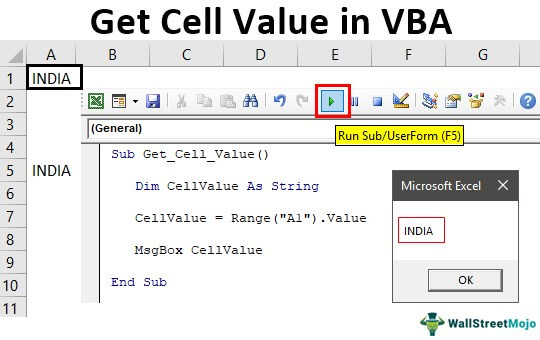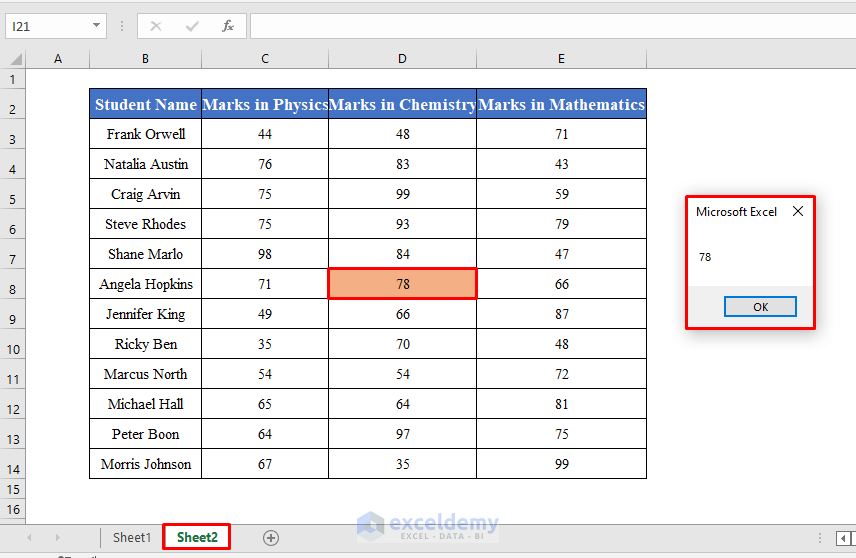
Cell values are a crucial aspect of working with Excel, and when it comes to VBA, accessing these values efficiently is key to creating effective macros. In this article, we'll explore five ways to get cell values in VBA, highlighting the syntax, benefits, and usage scenarios for each method.
Cells are the building blocks of an Excel worksheet, and accessing their values is essential for performing calculations, data manipulation, and automation. VBA provides several methods to retrieve cell values, each with its own strengths and use cases. Whether you're a beginner or an experienced VBA developer, understanding these methods will help you write more efficient and effective code.
1. Using the Range Object
The most common way to get a cell value in VBA is by using the Range object. This method involves specifying the range of cells you want to access, which can be a single cell or a range of cells.
Sub GetCellValueUsingRange()
Dim cellValue As Variant
cellValue = Range("A1").Value
MsgBox cellValue
End Sub
This method is straightforward and flexible, allowing you to access cells by their address or name. However, it can be slower than other methods, especially when working with large datasets.
2. Using the Cells Property
Another way to get a cell value is by using the Cells property. This method allows you to access cells by their row and column indices.
Sub GetCellValueUsingCells()
Dim cellValue As Variant
cellValue = Cells(1, 1).Value
MsgBox cellValue
End Sub
The Cells property is faster than the Range object, especially when working with large datasets. However, it can be less readable, especially when accessing cells that are far apart.
3. Using the Offset Property
The Offset property allows you to access cells relative to a specified range. This method is useful when you need to access cells that are adjacent to a specific cell.
Sub GetCellValueUsingOffset()
Dim cellValue As Variant
cellValue = Range("A1").Offset(1, 1).Value
MsgBox cellValue
End Sub
The Offset property is useful when you need to access cells that are adjacent to a specific cell. However, it can be less readable than other methods, especially when accessing cells that are far apart.
4. Using the Value Property of a Range Object
You can also get a cell value by accessing the Value property of a Range object. This method is similar to the first method, but it provides more flexibility when working with ranges.
Sub GetCellValueUsingValueProperty()
Dim cellValue As Variant
cellValue = Range("A1").Cells(1).Value
MsgBox cellValue
End Sub
This method is useful when you need to access cells within a range. However, it can be less readable than other methods, especially when accessing cells that are far apart.
5. Using the Evaluate Method
Finally, you can get a cell value using the Evaluate method. This method allows you to evaluate a formula and return the result as a value.
Sub GetCellValueUsingEvaluate()
Dim cellValue As Variant
cellValue = Evaluate("A1")
MsgBox cellValue
End Sub
The Evaluate method is useful when you need to access cells using a formula. However, it can be slower than other methods, especially when working with large datasets.
Conclusion
In this article, we've explored five ways to get cell values in VBA. Each method has its strengths and weaknesses, and the choice of method depends on the specific requirements of your project. By understanding these methods, you can write more efficient and effective VBA code that takes advantage of the flexibility and power of Excel.
Whether you're a beginner or an experienced VBA developer, mastering these methods will help you unlock the full potential of Excel and create more sophisticated and automated solutions.

Gallery of VBA Coding




FAQs
What is VBA?
+VBA stands for Visual Basic for Applications. It is a programming language used to create and automate tasks in Microsoft Office applications such as Excel, Word, and PowerPoint.
How do I access cell values in VBA?
+There are several ways to access cell values in VBA, including using the Range object, Cells property, Offset property, Value property, and Evaluate method.
What is the difference between the Range object and Cells property?
+The Range object is more flexible and allows you to access cells by their address or name, while the Cells property is faster and allows you to access cells by their row and column indices.











